#Solar Design Tool
Explore tagged Tumblr posts
Text
Avoid Costly Mistakes in Solar PV Design with the Right Tool!
The shift toward renewable energy has made solar PV design a crucial aspect of planning and implementing solar power systems. Whether you are a homeowner, installer, or solar engineer, understanding how to design an efficient solar PV system is essential. However, many people struggle with the complexities of the process, including system sizing, shading analysis, and layout optimization.
Fortunately, modern solar design tools can simplify these tasks, making solar PV projects more efficient and error-free. In this microblog, we will explore the key challenges in solar PV design and how the right solar design tool can help overcome them.
What Are the Common Challenges in Solar PV Design?
Designing a solar PV system involves several steps, and many beginners encounter the following challenges:
1. Accurate System Sizing
Choosing the right solar panel capacity to match energy needs is tricky.
Oversizing increases costs, while undersizing leads to power shortages.
2. Site Analysis and Shading Issues
Assessing shading from trees, buildings, and other obstructions is critical.
Poor shading analysis can reduce energy production significantly.
3. Layout Optimization
Arranging solar panels efficiently for maximum sunlight exposure is challenging.
Roof and land constraints make manual layout planning complex.
4. Compliance with Regulations
Solar PV design must adhere to local grid codes and safety standards.
Keeping up with changing regulations is difficult for designers.
5. Time-Consuming Manual Calculations
Traditional methods involve complex spreadsheets and manual calculations.
This process is prone to errors and takes up valuable time.
How Can a Solar Design Tool Simplify the Process?
A solar design tool automates many of these challenges, making solar PV planning faster, easier, and more accurate. Here’s how:
1. Automated System Sizing
Advanced software calculates the ideal system size based on energy consumption and solar potential.
Prevents underperformance or excessive costs.
2. Advanced Shading Analysis
Uses 3D modeling and satellite imagery to detect shading problems.
Ensures optimal panel placement for maximum sunlight exposure.
3. Smart Layout Planning
AI-powered tools automatically suggest the best panel arrangement.
Takes roof angles, obstructions, and available space into account.
4. Compliance Checking
Built-in regulations help designers stay compliant with local codes.
Reduces risks of approval delays or legal issues.
5. Faster Design Process
Eliminates manual calculations and complex spreadsheets.
Saves hours of work and improves accuracy.
Which Solar Design Tool Should You Use?
There are several solar design tool available, but not all are user-friendly or accurate. A good tool should offer: 1. Easy-to-use interface — No need for advanced technical skills. 2. Accurate shading and energy yield analysis — Based on real-world data. 3. Integration with CAD and other design software — For seamless workflow. 4. Fast and automated design process — Reducing effort and increasing efficiency.
Tools like Virto Solar provide comprehensive features for solar PV design, helping users make data-driven decisions.
Final Thoughts
Designing a solar PV system can be complex, but with the right solar design tool, the process becomes much simpler. Whether you’re a professional installer or a homeowner exploring solar energy, leveraging digital tools ensures efficiency, accuracy, and better project outcomes.
By using automated solar PV design software, you can save time, reduce errors, and create optimal layouts for maximum energy efficiency. Ready to simplify your solar PV design? Start exploring modern design tools today!
#pv design software#solar design tool#solar pv design#solar engineering#solar design software#solar energy#pv design autocad
1 note
·
View note
Text
The Future of Solar Permitting, Trends and Innovations
As the solar industry continues to grow, the permitting process will evolve to meet the demands of increased deployment. Solar licensing, the process of obtaining the necessary permits to install solar energy systems, is critical to safety, compliance, and efficiency. However, this was often considered an inconvenient and time-consuming obstacle. Innovations and trends in solar permitting are now streamlining this process, making it easier and more efficient for homeowners, businesses, and municipal projects.
Digital Shift in Solar Permitting
One of the most important trends in solar permitting is the shift to digital platforms. Traditional permitting often involves paper applications, in-person deliveries, and long approval times. Digital permit platforms are revolutionizing this by allowing applicants to submit, track, and manage permits online. This not only speeds up the process, but also reduces errors and improves communication between stakeholders.
Standardization and simplification of solar permit requirements
Another important trend is the standardization and simplification of permit requirements. Different jurisdictions often have different requirements, leading to confusion and delays. The effort is to create standard guidelines that can be universally adopted, simplifying the process for installers and reducing the learning curve for new markets.
Key updates:
Uniform permit applications for solar installations: development of a single standard application form that can be used across multiple jurisdictions.
Simplified rules for solar permits: We are simplifying rules to focus on important safety and compliance checks, eliminating unnecessary red tape.
Solar Permit Reform Practices
Governments and regulatory bodies are increasingly recognizing the need for permit reform to support the growth of solar energy. Legislative work is underway to remove common barriers and create a more enabling environment for solar deployment.
Key Updates:
Expedited Solar Permitting Processes: Expedited permitting for small-scale residential and established technologies.
Allow fee reductions for solar projects: Allow fee reductions or waivers for solar projects to reduce financial barriers to entry.
Integration with Solar Design Tools
Integrating permitting processes with solar design tools is another innovative trend. Solar design software today often includes features that help create permit-ready documents and ensure that all necessary information is included from the start.

Key innovations:
Design-based integration in solar installations: solar planning tools that automatically generate permit-ready documents, reducing the need to prepare a separate application.
Real-Time Solar Permit Compliance Check: Software that checks plans against local permit requirements in real-time and notifies you of potential issues before submission.
Key Updates:
Predictive Analytics for Solar Enabled: Using historical data to predict license times and identify bottlenecks.
Solar Permitting Performance Metrics: Track Key Performance Indicators (KPIs) to measure the effectiveness and efficiency of the permitting process.
Collaboration and sharing of best practices in solar permitting
Collaboration among various stakeholders, including government agencies, industry associations, and solar companies, promotes the sharing of best practices and innovative solutions. This collaborative approach helps identify common challenges and develop common strategies to address them.
Key News:
Industry Working Groups to Enable Solar Energy: Formation of groups that bring together different stakeholders to discuss and implement best practices.
Knowledge-sharing platforms for solar energy permits: platforms will be created where municipalities can share their successes and challenges in issuing solar energy permits.
The future of solar permits is bright, and many trends and innovations are poised to make the process more efficient, standardized, and easy to use. As digital transformation, standardization, policy reform, and technology integration progress, the barriers to solar adoption will decrease. This development not only benefits installers and customers, but also supports the wider goal of moving towards more sustainable and renewable energy.
By continuing these trends and advocating for continued innovation, solar industry stakeholders can help shape the promising landscape that facilitates the rapid and widespread adoption of solar energy.
For more information, visit Green World Renewable Energy.
Email: [email protected]
Contact Us: +1 (443) 478-4297
#Solar Energy Compliance#Renewable Energy Trends#Solar Permit Simplification#Predictive Analytics in Solar#Solar Design Tools Integration#Solar Permit Reform#Digital Solar Permitting
1 note
·
View note
Text
Dandelion News - January 15-21
Like these weekly compilations? Tip me at $kaybarr1735 or check out my Dandelion Doodles!
1. Landmark debt swap to protect Indonesia’s coral reefs

“The government of Indonesia announced this week a deal to redirect more than US$ 35 million it owes to the United States into the conservation of coral reefs in the most biodiverse ocean area on Earth.”
2. [FWS] Provides Over $1.3 Billion to Support Fish and Wildlife Conservation and Outdoor Access

“Through these combined funds, agencies have supported monitoring and management of over 500 species of wild mammals and birds, annual stocking of over 1 billion fish, operations of fish and wildlife disease laboratories around the country, and provided hunter and aquatic education to millions of students.”
3. Philippine Indigenous communities restore a mountain forest to prevent urban flooding

“Indigenous knowledge systems and practices are considered in the project design, and its leaders and members have been involved throughout the process, from agreeing to participate to identifying suitable land and selecting plant species that naturally grow in the area.”
4. Responsible Offshore Wind Development is a Clear Win for Birds, the U.S. Economy, and our Climate

“[T]he total feasible offshore wind capacity along U.S. coasts is more than three times the total electricity generated nationwide in 2023. […] Proven strategies, such as reducing visible lights on turbines and using perching deterrents on turbines, have been effective in addressing bird impacts.”
5. Illinois awards $100M for electric truck charging corridor, Tesla to get $40M

“The project will facilitate the construction of 345 electric truck charging ports and pull-through truck charging stalls across 14 sites throughout Illinois[…. E]lectrifying [the 30,000 daily long-haul] trucks would make a huge impact in the public health and quality of life along the heavily populated roadways.”
6. Reinventing the South Florida seawall to help marine life, buffer rising seas
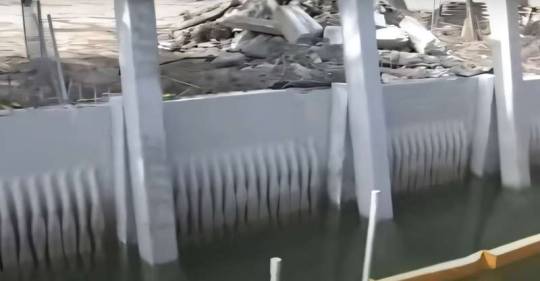
“[The new seawall] features raised areas inspired by mangrove roots that are intended to both provide nooks and crannies for fish and crabs and other marine creatures and also better absorb some of the impact from waves and storm surges.”
7. Long Beach Commits to 100% All-Electric Garbage Trucks
“[Diesel garbage trucks] produce around a quarter of all diesel pollution in California and contribute to 1,400 premature deaths every year. Electric options, on the other hand, are quieter than their diesel counterparts and produce zero tailpipe emissions.”
8. ‘This Is a Victory': Biden Affirms ERA Has Been 'Ratified' and Law of the Land

“President Joe Biden on Friday announced his administration's official opinion that the amendment is ratified and its protections against sex-based discrimination are enshrined in the U.S. Constitution.”
9. A Little-Known Clean Energy Solution Could Soon Reach ‘Liftoff’

“Ground source heat pumps could heat and cool the equivalent of 7 million homes by 2035—up from just over 1 million today[…. G]eothermal energy is generally considered to be more popular among Republicans than other forms of clean energy, such as wind and solar.”
10. Researchers combine citizens' help and cutting-edge tech to track biodiversity

“Researchers in the project, which runs from 2022 to 2026, are experimenting with tools like drones, cameras and sensors to collect detailed data on different species, [… and] Observation.org, a global biodiversity platform where people submit pictures of animals and plants, helping to identify and monitor them.”
January 8-14 news here | (all credit for images and written material can be found at the source linked; I don’t claim credit for anything but curating.)
#good news#hopepunk#nature#national debt#coral reef#conservation#funding#fish and wildlife#philippines#indigenous#agroforestry#green infrastructure#offshore wind#wind energy#electric vehicles#illinois#florida#sea wall#habitat#california#equal rights#human rights#us politics#geothermal#biodiversity#citizen science#climate change#invasive species#endangered species#clean energy
280 notes
·
View notes
Text
“My Dream Is Still Alive Despite the Rubble”


My dream has always been to become a UX/UI designer and a web developer. This dream has been my compass toward a better future for me and my family, giving my life meaning and hope despite the challenges.

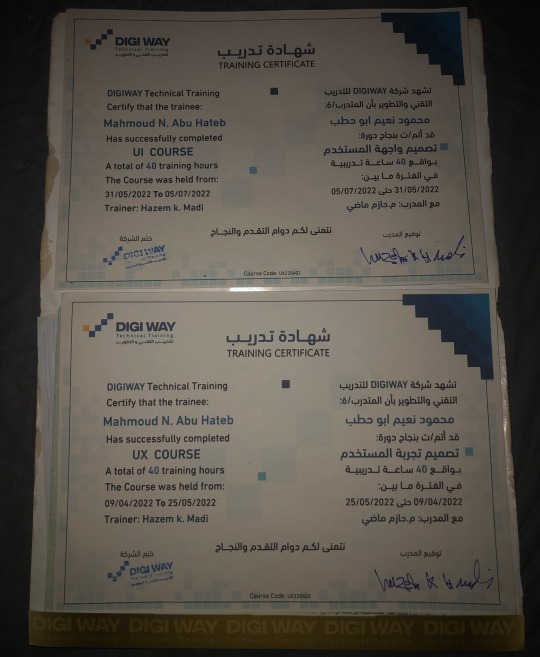
But the war in Gaza turned our lives upside down. We lost our home, my university, and even the laptop I relied on for learning and work. We were displaced to the southern part of Gaza, where we suffer daily from power outages and limited internet access. Despite these circumstances, my heart still clings to hope, and I refuse to give up on my dream.
I am not just asking for support to acquire equipment; I am asking for a chance to rebuild my future—not just for myself, but for my family as well. I believe that every challenge holds an opportunity, and I am determined to turn this hardship into a story of success.
Why Do I Need Your Support?
To continue my education and pursue my dream, I need some essential tools to help me learn and work under these harsh conditions:
• Laptop: $2,000
• Solar Panel: $2,000
• Power Inverter: $1,000
• 100Ah Battery: $1,000
Total Cost: $6,000.
So far, I’ve managed to raise €975 through my GoFundMe campaign, but I need to reach €7,000 to cover all costs.

My Vision for the Future:
My ambition is not just to complete my studies but also to use my skills to support my community in Gaza. I aim to train young people in programming and design so we can contribute to building a better future despite the challenges we face.


Why Your Contribution Matters:
Your donation is not just helping me personally but is an investment in a young man determined to empower his community. I aspire to become a role model for Palestinian youth, showing that resilience and creativity can overcome any obstacle.
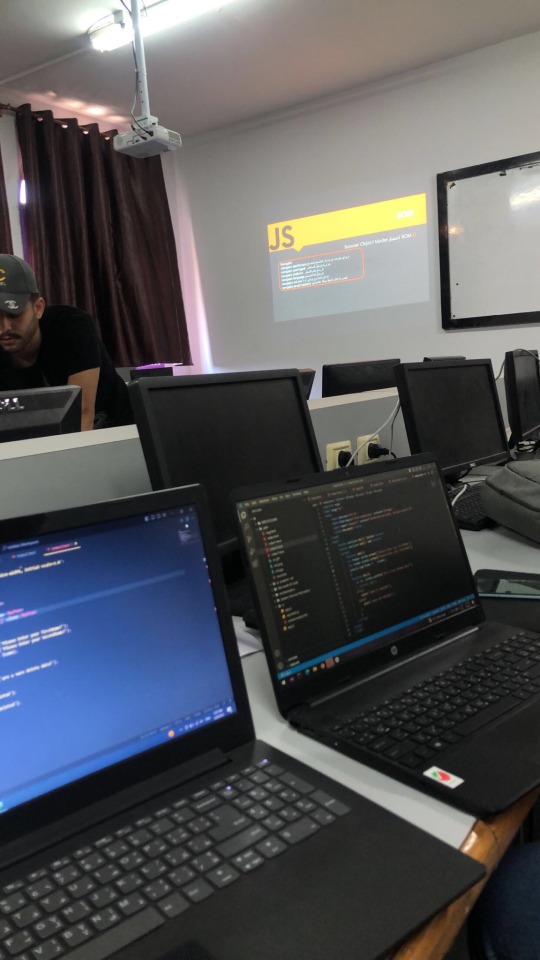

A Heartfelt Thank You:
I live under difficult conditions, but I believe that goodness exists everywhere. Every person who contributes to my dream brings hope back into my life and gives me the strength to keep going.
How You Can Help:
1. Donate to the campaign:
GoFundMe
OR USDT

TLns8czyFHsJQWkaAEeza3of5cgEH7vi3n
2. Share my story with your friends and family. It might reach someone who can help.
3. Offer advice or opportunities that could help me develop my skills and achieve my dream.
Finally:
I promise to share every step of my journey with you—from acquiring the equipment to completing my education and realizing my dream. You are part of this story, and your support is the light I need right now.
“In the darkest times, there is always a ray of light. That light is you and your support, which gives me the strength to carry on.”
Special Thanks:
I would like to extend my heartfelt gratitude to everyone who has supported me so far. A special thanks to:
@gaza-evacuation-funds @gaza-relief-fund @wellwaterhysteria @ayeshjourney @nabulsi @catnapdreams @vetted-gaza-funds @vetted
#gaza#free gaza#save gaza#palestine#free palatine#save palestine#help my family#ui ux design#programming#web development#web design#vetted fundraiser#vetted#university#figma#design#gaza gofundme#palestine gofundme#gofundme#gfm#palestine gfm#gaza gfm#vetted gfm#gaza fundraiser#palestine fundraiser#fundraiser#help gaza#help#please help#christmas
318 notes
·
View notes
Text
Egyptologists have excavated a nearly 9,150-square-foot astronomical observatory in modern-day Tell el-Faraeen dating back to the sixth century BCE—the first and largest of its kind from that era. In an August 23 announcement from Egypt’s Ministry of Tourism and Antiquities (interpreted from Arabic to English using Google Translate), the mud brick structure contained numerous tools that, although comparatively simple in design, allowed for the precise study and measurement of solar calendrical dates related to Egyptian religious rites, royal coronations, and agricultural plans.
Continue Reading.
278 notes
·
View notes
Note
Has there been any instances where Mc and C did work together other than the fake baby thingy?
the science lab was filled with high schoolers scrambling to set up their projects, all of them either too caffeinated or not caffeinated enough for the stress of the prestigious state science fair in washington.
the tables were crammed with an impressive array of projects: models of volcanic eruptions, elaborate circuits blinking in synchronized colors, experiments with soil composition in tiny terrariums. but none of them held a candle to your table, and you knew it.
you worked quickly, your fingers deft as you adjusted the components of the intricate apparatus. the machine—an elegant contraption meant to demonstrate clean energy storage using solar capacitors—was you and C’s brainchild.
they had done the research, the design, the equations scribbled out with ruthless precision in their sharp handwriting. you’d handled the practical end of things: soldering wires, programming the software, ensuring that their theoretical masterpiece could actually, you know, work.
you didn’t notice the way C stood a few feet away, arms crossed tightly, their posture as stiff as a statue’s. their chalcedony green eyes followed your every move like a hawk watching its prey, catching each adjustment you made, each tool you reached for.
finally, they cleared their throat. “you’re doing it wrong.”
you sighed without turning around, tightening a bolt on the panel. “good morning to you, too, lacroix. nice to see you’re in a supportive mood today.”
“supportive?” their voice had that sharp, clipped quality it always took on when they thought you were being deliberately obtuse. “i’d be supportive if you weren’t—” they made an exasperated noise, gesturing vaguely at the machine. “look, the angles on the solar panels are all wrong. the light’s not going to hit them efficiently like that. it’s basic geometry. i explained this to you yesterday.”
“okay,” you said evenly, glancing at them over your shoulder. “anything else?”
C blinked, their expression flickering into something almost like confusion. “you’re just... accepting it? like that?”
“well, yeah,” you said, shrugging. “you’re the brains behind this, aren’t you? if you’ve got more suggestions, i’m open to them.”
C suddenly seemed at a loss for words. the tips of their ears turned a faint pink, and they glanced away.
“well, i, uh...” they began, before scowling at you like it was somehow your fault they’d stumbled. “fine! move the reflector two inches to the left.”
you did as they asked, your motions slow and deliberate. “happy?”
“stop talking to me,” C snapped.
you blinked at them, incredulous. “you’re the one bossing me around!”
C ignored you, their nose tilting upward in that infuriatingly haughty way they’d perfected.
***
when the judges arrived at your school’s section, the air grew thick with anticipation. there were four of them—an engineer from spacex, a college professor from MIT, a tech startup CEO, and some local entrepreneur who had been introduced as a ‘philanthropist.’
they moved from table to table with an efficiency that made your stomach churn. you’d been rehearsing your answers for days, but there was something about the way they scribbled on their clipboards that made even your confidence waver.
but the presentation began smoothly enough, much to your relief. C handled the technical explanations, their voice steady and precise as they guided the judges through the intricacies of your design. you handled the broader picture, spinning a compelling narrative about its real-world applications.
but when the judges started asking questions, something shifted.
“so, who came up with the original concept?” the engineer asked, pen poised over her notepad.
“well,” you started, “it was—”
“me,” C interrupted, their green eyes glinting. “i developed the initial framework.”
you gave them an irritated look. “what they actually meant to say was that it was a joint effort.”
“sure,” C drawled sarcastically. “you jointly borrowed my calculations and then messed up the assembly two separate times.”
you bristled. “maybe if your diagrams weren’t as convoluted as your personality, i wouldn’t have had to ‘mess up’ anything.”
“convoluted? that’s rich, coming from someone who thought capacitors and resistors were interchangeable—”
“that was one time, and it only happened because you mislabeled them!”
the judges exchanged glances, two of them clearly trying not to laugh, the other two looking mildly alarmed.
“would you say you two work well together?” another judge ventured cautiously.
“oh, absolutely,” you said, your tone dripping with sarcasm.
“can’t agree more,” C added, voice as flat as a table.
the judge raised an eyebrow, scribbling something down.
by the end of the presentation, both of you were red-faced and fuming, but the machine worked perfectly, and the judges seemed reluctantly impressed.
***
after the presentation, you and C sat side by side in the waiting area, the hum of chatter and distant applause filling the space. your hands rested in your lap, but when you shifted slightly, your fingers brushed against theirs. the accidental contact sent a jolt of heat up your arm, and you risked a glance at them.
C was staring angrily at the floor as if it had just demanded to drain their bank account, half of their face buried in the high collar of their dark green turtleneck. the tips of their ears had turned even more pink. their foot tapped against the floor in rapid, agitated beats.
when the winners were announced, your names rang out together, tethered like an inevitability.
you and C locked eyes, both startled, before standing up in unison. the applause was loud, but all you could focus on was the awkwardness of walking side by side to accept the award.
you still fell into step beside them, the trophy handed over in a flurry of handshakes and flashes from the crowd’s cameras.
the microphone passed between you two for the acceptance speech.
“we’d like to thank our school for supporting this project,” you began, glancing at C.
“and, of course, this wouldn’t have been possible without the cooperation of my... partner,” they added, their jaw tightening as if the words physically pained them to say.
you were tempted to laugh at how they looked like they were having a particularly bad case of indigestion, but managed to keep a straight face for the cameras.
***
after the ceremony, the two of you lingered near the refreshment table. C cleared their throat awkwardly, avoiding your gaze.
“you did... good,” they muttered.
you cocked your head, thinking you misheard them. “what?”
“i said you did good,” they repeated, louder this time. “you didn’t embarrass us. much.”
you snorted. “thanks, i guess. you weren’t too bad yourself.”
C hesitated, their eyes darting to the trophy in their right hand as their other hand fidgeted with the edge of their aldervale prep blazer.
“you’re smart though,” they said finally, their voice softer than usual. “you would’ve won without me.”
the admission startled you. “was that... a real compliment?”
this time, C’s cheeks turned pink as well, and they huffed loudly, turning on their heel. “i’m leaving. and i’m taking the trophy.”
“wait, what?” you snapped out of your stupor and hurried after them. “that’s not fair, lacroix! we both won!”
“too bad, starkid,” C called over their shoulder, their tone maddeningly smug. “you want it? come and get it.”
you groaned, chasing them through the crowd. “lacroix, get back here!”
and for the first time all day, C’s smile was genuine enough for their dimples to show.
#my god they’re stupid#fellas is it weirdly romantic to chase each other through crowds?#upcoming scenario is gonna be for M 😗#if: the ballad of the young gods#interactive fiction#interactive novel#interactive story#twine wip#ro: c lacroix#ro scenarios
230 notes
·
View notes
Text
Hey folks let me anti-doomscroll you for a quick second:
Batteries and Solar have been getting cheap very quickly for a long time now and not only is it not stopping, but even at the rates it's at the economics of energy are shifting rapidly. The costs of decarbonizing all forms of electric power are now more down to infrastructure and planning than bulk cost. Compare and contrast to the turn of the century when Solar was so prohibitively expensive that saying we'd meet any meaningful fraction of our needs with photovoltaics would have gotten you laughed out of the room.
Meanwhile, although there are lots of complicated moving parts and a surprising amount of gross politics attached, gas cars are now less good in most ways than electric. Again, at the turn of the century this would have sounded laughable.
Many industries have specific needs that prevent direct conversion to electric, but hydrocarbon fuels are not intrinsically fossil fuels and can be made as a storage medium for solar. Hydrocarbon fuels made in this way are intrinsically carbon neutral. The technology is relatively young, but from a basic math perspective looks very doable.
Inflation actually has more to do with the above than it does with whatever it is the federal reserve does, and pulling down a supply of energy from the sky that requires less infrastructure to get (which is true because that's why it's cheaper now) directly helps.
The current "business as usual" scenarios with global warming are lower than they used to be, because the solar transition is just sort of happening because of economics without a lot of government help. All of the above lower the amount of friction and pushback we face when trying to get the government to do something.
By the way, the Inflation Reduction Act, passed by Joe Biden a couple years back, is explicitly designed to accelerate these trends.
As disastrous as the current projections for global warming are, it's important to keep two things in perspective: first, that they are exactly that, disasters, not the end-of-the-world kind but more sort of the hurricanes and floods kind, and second, while they certainly will get worse before they get better, they can and will get better. What we do now from a policy perspective has an outsize impact on how much flooding, droughts, and other weather-related costs we will face in the decades to come, but "human civilization ends" is not actually particularly likely. It is much more realistic to say "we could have a huge number of climate-related disasters or a moderately increased number, and every little bit of policy work helps move the needle".
We can and we will solve global warming, the question is not if but when, and how many lives can we save or improve by acting as soon as possible. Imagining this as an almost-certain death sentence for the future of humanity and nature is not merely unrealistic, but wildly counterproductive. It is paralyzing and enervating when what will do the most good is planning, policy, and communication.
Remember, despair is not a tool for positive change. Hope is the real language of revolution.
456 notes
·
View notes
Text
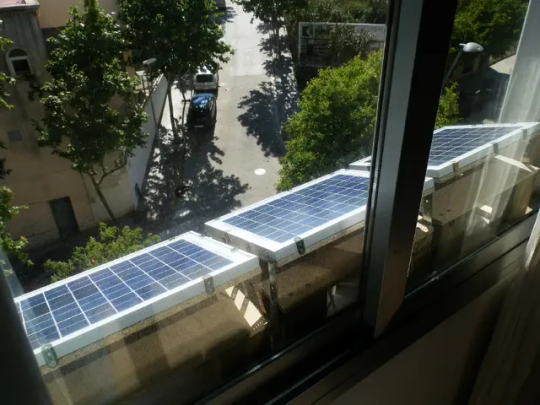
How to Build a Small Solar Power System - Low-tech Magazine
Readers have told me they like to build small-scale photovoltaic installations like those that power Low-tech Magazine’s website and office. However, they don’t know where to start and what components to buy. This guide brings all the information together: what you need, how to wire everything, what your design choices are, where to put solar panels, how to fix them in place (or not), how to split power and install measuring instruments. It deals with solar energy systems that charge batteries and simpler configurations that provide direct solar power. Conventional solar PV installations are installed on a rooftop or in a field. They convert the low voltage direct current (DC) power produced by solar panels into high voltage alternate (AC) power for use by main appliances and rely on the power grid during the night and in bad weather. None of this holds for the small-scale systems we build in this manual. They are completely independent of the power grid, run entirely on low voltage power, and are not powering a whole household or city but rather a room, a collection of devices, or a specific device. Small-scale solar is decentralized power production taken to its extremes. Most of the work in building a small-scale solar system is deciding the size of the components and the building of the supporting structure for the solar panel. Wiring is pretty straightforward unless you want a sophisticated control panel. You only need a limited set of tools: a wire stripper, some screwdrivers (including small ones), and a wood saw are the only essentials. A soldering iron, pliers, and a multimeter are handy, but you can do without them.
243 notes
·
View notes
Text
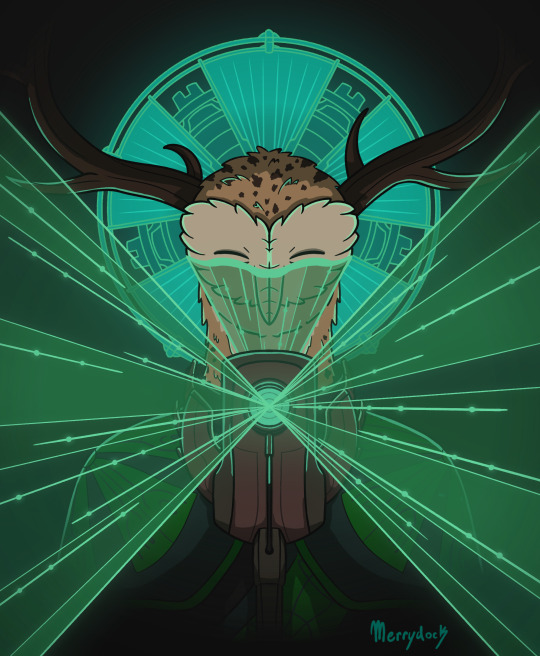
Some old art of my Owlk engineer, Eris, designing the Stranger's solar sails! Enjoy a big ramble about him and his job because I love this silly man:
Eris works on the design team for the Owlk space program, specialising in energy and propulsion technologies for the ships, satellites, and probes. Having a design philosophy of functionality and beauty, Eris enjoys going all-out with his work. He has received special recognition for his solar panel designs in particular, which borrowed from the unparalleled efficiency found in photosynthesizing plants.
When designing the Stranger's solar sails, Eris took inspiration from plants, but also the opening of insect elytra; the ballooning behaviours of silk-producing invertebrates, in which they sail from tree to tree using electric fields and air currents; and how flying creatures will use thermal updrafts to soar higher while expending less energy. Already familiar with how solar energy impacts technology from his work on solar panels, he proposed the use of this energy to propel the Stranger through space.
As travelling the distance between stars presented the major roadblock in the plan to reach the Eye (regarded as the Interstellar Propulsion Problem), Eris was lauded for his contributions, promoted to being one of the main engineers overseeing the Stranger's design.
More information about his general design process below!
When designing for a project, Eris uses all of the tools at his disposal. His first weapon of choice is always his pencil, and he will sketch out potential sources of inspiration on paper until the design concept begins to take form. Based on the initial project parameters he's been given, he drafts up a blueprint for his components.
Next, he must further conceptualise his designs. This is where the most valuable tool of the trade comes into play—the Vision Torch! Vision Torches serve many purposes for Owlks, from allowing them to nonverbally communicate to creating photographs from memory alone. Owlk engineers LOVE Vision Torches for how easy they make effectively communicating ideas. They allow concepts to be visualised in 3D, basic functionality to be shown through animations, and are even able to interface with computers. Eris might even 3D print a model using a Vision Torch to help him visualise his concepts as he works.
The space program is extremely collaborative, and Eris works on just a small part of the overall project, so being able to easily share ideas with others and see how all the individual components of a satellite or ship interact is vital. When discussing with more than a single other Owlk, Eris can use a Vision Torch linked to a holographic display to present concepts to a crowd. Concepts can also be tweaked in real time this way!

[Here's an example from the game of Owlks building the simulation with Vision Torches and a holographic display!]
With a Vision Torch, concepts can also be directly uploaded to a computer terminal. This is where a lot of the real work gets done - calculating weight, materials needed, stress testing in simulations, calculating trajectories, making precise tweaks to finalize the design, you name it. This also allows other Owlks working closely with Eris to access the most current design for their own tests.
This is an iterative process - as other Owlks finalize their components, as weight limitations are further restrained and material needs are calculated, Eris often has to go back to an earlier step and rework his concept. Fortunately, he thoroughly enjoys getting to be creative in his work (and doing math) and treats every project as a puzzle that needs to be solved! The only time when he's not excited to go back to the drawing board is when a last-minute adjustment from his peers means he needs to work long hours to get his work done in time for launch.
#outer wilds#outer wilds spoilers#echoes of the eye#echoes of the eye spoilers#outer wilds oc#my art#eris#my workaholic son#someone needs to tell him to take a break#please
68 notes
·
View notes
Text
The Arcturus Missions
Part Seven - Communication Break
Part Six
———
Radio waves were the first sign that the intergalactic community got that there was intelligent life on Earth, as they traveled infinitely through space, language and music lightly introduced to scientists of several societies. Special equipment was designed to refine the weakened waves and check the sounds that originally traveled over them. It was interesting to learn about a civilization so far away.
Radio waves were a common communication tool across several planets, whether for entertainment or military operations. It was considerably easy to maintain and made communications between groups on the same planet more convenient. Most societies kept track of a certain number of channels to prevent conflict, you’d be stupid to have espionage over radio.
In roughly the area of space that Cybertron sits, the radio waves from Earth were from around twenty or more years ago, and were going though the systems for re-mastering the original audio. Unfortunately those who chose to listen to other worlds radio waves, it was now playing the original hits of the 1980’s, just before the Quintessons attacked.
—
Hound was standing there, staring through a wall in the general direction of the communication while the others lost their shit behind him, “He can’t actually mean Jazz, not like pilot Jazz, right?” Sideswipe stands and starts pacing, looking over to Sunstreaker, “We heard him over the delayed messages, we knew he made it to this planet. But there is no way he’s still alive.” Sunstreaker leans his head back against the wall, “It’s been five years and we’re the first group Mecha has bothered to send to find him, five years. Stuck with a bunch of aliens who have similar tech to our own.” It hung in the air for a moment, “Could they be fighting the same things we are?” To be perfectly honest, none of them had thought of that before.
What if those things were fighting the same thing they were, on this weird planet that was covered in metal and rained acid, fighting the tentacle monsters of nightmares, “Even if they are, our mission is to stop them from attacking Earth. Was to find Jazz and stop them from attacking Earth.” Hound turns to the others, who were all in states of shock, “Our focus needs to be on the mission, if we can actually find Jazz then that’s step one done.” Sideswipe stands, moving over to Hound, “If we get Jazz, we might actually be able to finish this mission.” Breakdown nods slowly, finally letting the hum of his cannon die, “That is if we can get off this planet, with the Odyssey.” “If these things trust Jazz, then I’m sure he can talk them into helping us.” Sunstreaker pops his knuckles lightly which causes his suit to creak painfully, Sideswipe winces and swats at his brother, “Don’t do that.” “Then stop biting your lip.” And they started to bicker as Breakdown got up, moving over to Hound.
“What do you think of this, really?” Breakdown leans towards Hound, they’d stayed off comms since Prowl’s abrupt appearance and disappearance; “I don’t like it, if these things are spread out attacking multiple planets? How are we going to find where their coming from and not where their attacking.” Breakdown hummed and shook his head, his visual feeds starting to pick up the beings heading towards them, “The enemy of my enemy is my friend, right?” He sounded unsure of the saying but Hound nods with a smile, resting his hand on Breakdown’s shoulder, “You’re not wrong. But if these things are keeping Jazz hostage or worse, then they are the enemy.” Breakdown nods and keeps watching as the figures drew closer. Sunstreaker and Sideswipe standing, joining them near one of the walls.
—
The transmissions were near and clear, filled with typical battle chatter and sounds of explosions. Even if no one could make out exactly what they were saying, the same strange mechs as Jazz had activated the defense system of a solar farm off the coast of the sea of rust. It typically defended the area if the Quintessons landed in the sea or for the regular vermin that lived out there, it was over kill for the scraplets though.
It had been Blaster who’d picked up the signal and sent it to Prowl, knowing he was able to loosely translate the strange language. At which point Prowl had been in a meeting with Mirage, he’d gone from going over the recent reports to standing stock still, staring at nothing. For a click, Mirage let it slide, when Prowl continued to stare at nothing though, it was time to act. Standing and moving over to his commander, Mirage edges his way in front of him, “Commander, Cybertron to Porwl, sir.” He waved his servos in front of him, “Sir?” Prowl just about jumped out of his plating, “Mirage, I apologize, I was receiving a communication from Blaster.” Nodding slightly, Mirage steps back to give Prowl space. He watches in almost shock as Prowl drags his servos down his faceplates, the only time he looked like that was when it involved Jazz, “Sir, is it Jazz?” Mirage couldn’t help but ask, always finding their relationship so intriguing.
Prowl’s scowl was more typical, making Mirage smirk a bit, “No, it’s not Jazz, but it’s more of his kind.” That made the smirk fall and sent his spark to his peds, “More of them?” Jazz was a unique mech, needing more recharge but able to take more pain than any cybertronian. He was already becoming a mythic legend on the field, more of them could help keep the Quints off Cybertron. The gears were already turning in his processor. For Prowl though, who knew what Jazz really was, he was horrified. One of them, this Hound, had given a pilot number like Jazz did when trying to contact home. More pilots sent on a mission to their demise for the greater good of their planet, more who missed their families and home. Prowl could understand that, he’d have given just about anything to save Praxus, but he’d learned that giving your life for a cause didn’t mean much in the long run.
Raising a hand, Prowl silenced Mirage’s tirade, “Their out at the rust sea and likely are to attack anyone they come upon, since our weapons hit them first.” “Scrap.” Prowl nodded again before starting out of the room, Mirage hot on his peds, “I’ll need to contact Jazz along the way to alert him, their is a potential that he knew these other— mechs.” Biting his glossa, he nearly swore aloud at himself having to reframe from saying pilots. Mirage nods and falls in at Prowl’s side, “Do they know were coming?” Prowl delays for a second, “Not yet.” Nodding again, Mirage falls silent as Prowl contacts the strangers.
Out in the sunshine, they hurried into a transformation sequence, Prowl turning on his siren briefly to clear a bit of the traffic. Iacon was a sizable distance from the edge of the rust sea, the specific solar far that was current being attacked was on the edge of Polyhex, if they got on a high speed transport they could be there within clicks. Mirage stayed tight to Prowl’s bumper as they sped to the transport station, it wasn’t every day you got to meet other mechanicals; meeting Jazz has altered Prowl’s world so much and Mirage wanted a piece of that action.
They arrived at the station in record time and requested the fastest private transport, Prowl was still on comms so Mirage remained quiet, not wanting to be a distraction. Entering the transport, he took a seat away from Prowl and retrieved a datapad from his subspace, deciding to take the short amount of time they had on here to catch up on a report. Prowl glances up briefly before returning to stare towards nothing in particular, clearly deep in conversation with someone. His servo comes up to rub his jaw and Mirage has to hide a smile, he knew Prowl as speaking with Jazz. Jazz was the only mech who could make Prowl flustered, though it looked more exasperated than anything. Mirage sits back with his datapad, pausing only for a moment to read a message, swearing loudly, “The big yellow one took Beachcomber’s arm off.” Prowl looks up, “Fuck.” It was a moniker he’d picked up from Jazz but it often fit the situation.
—
Their sanctuary of the warehouse shook lightly as the approaching figures landed the transport, Hound adjust the grip on his gun lightly, fingers flexing, “Stay on your toes, we don’t know what they are.” It was a reminder that none of them needed. Hound was watching intently, eyes flicking between the displays on his visor, before pulling up an experimental piece of tech from Perceptor, turning the translator on in hopes it would eventually be able to discern their language. It was still a work in progress, the front liners back home all had them in hopes of learning the aliens language.
The twins were each shifting from foot to foot, both still splattered with the very pink fluid which had since dried to their plating. Breakdown kept turning down the command to reactivate his cannon, it clicking menacingly on his back and Hound stood straight with his gun held comfortably to his front. After several minutes, the rolling door in front of them opened and three mechs stood there, though one ran off once it was open.
Both had, odd, attachments to them. One painted reminiscently of older police vehicles and the other a very typical factory blue, but both had their odd features and neither was adorned with a facial shield. Each had a highly expressive and realistic facial unit, something that was often discussed back home to make the suits appear more friendly. Hound lightly raised his hand, lowering his gun, even though the one did not lower his cannon, he honestly couldn’t blame them. Clearing his throat slightly, Hound shifts his weight wanting to step forward but deciding against it, “Uh, hello there. We are Mecha pilots, from Earth.” The black and white mech raised his hand, clearing meaning to hold Hound off from talking further. Sideswipe leaned into his brother, “So, they don’t really know any English, do they?” “I doubt it.” Sunstreaker held his arms slightly up in a defensive position in case either chose to attack.
—
Standing there, Mirage knew they were talking in their strange language, he’d heard Jazz speak it several times but it was stressful to not know what they were talking about, “Any time Prowl, would love a translation.” All their heads whipped to him, visors glowing slightly brighter, “Their creatures must have been weird mecha to give them all visors.” He shifts back a bit, looking across them briefly though eyes landing on the green one, he started at the rifle hanging lightly from one hand, “A moment more Mirage, I am trying to get Jazz on the right signal.” “Jazz, is across the planet in Kaon with Megatron and the others dealing with the Quints there.” Prowl held his hand up again, annoyingly. Sometimes he wished his commander would just ask him to shut up, the green ones held tilted ever so slightly.
—
Static filled their comms, making them all wince and the twins tried to shield their ears, “Oh god, again?” Sideswipe was half bent over from the painful noise before the comm frequency clicked and fell silent, then the monotone voice spoke, “ID’s, now.” Hound sighed, it wasn’t the most friendly way of asking but he understood this man hardly spoke English before nodding slightly, “I’m Pilot 1124, Harold Jackson, call sign Hound.” The one he could only assume was Prowl nodded before turning his gaze to the next of the Arcturus crew, “I’m Pilot 2450, Sonny Salucci, callsign Sunstreaker.” “I’m Pilot 2451, Simon Salucci, ugly’s brother. Callsign Sideswipe.” Breakdown shifted uncomfortably before looking to Hound, who nodded, “I’m Pilot 1457, Oleksknder Kovalenko, callsign Breakdown.” There were several clicks and pops over the line, Hound winced and lightly rubbed one of his ears. The blue and white mech’s eyes widened, starting at the twins, Sideswipe shifted uneasily even as Prowl rested a hand on the other mechs shoulder.
A loud crash of sound filled their ears before the obvious sounds of fighting filled the comm line, “There is no way in hell that Hound would come on a dead end mission, it’s not possible.” Jazz’s voice filled their ears even as the clear sounds of his struggle joined the noise, “No way.” “That’s funny, because as you say, I am looking right at them.” Prowl’s voice joined Jazz’s, sounding much more relaxed than previously. Hound was staring at Prowl, taking a breath before finally speaking, “He would if he was looking for you.” There was a loud crash from the other side of the line, which Hound tried not to smile at, “Hey Hound.” “Hey Jazz.” He took a breath, relieved, stage one done.
“Holy shit, Jazz, hey!” Sideswipe turned away from the weird mechs and throw his hands up, likely smiling, “Fucking five years and all you can say is hey to Hound?” Both their laughter filled the comm line, it was more than a relief, it was more than they could hope for in the mission, “Where you at?” “Ah, you wont know where Kaon is, but we could use the help with the Quints.” Sideswipe stopped, tilting his head slightly and Hound cleared his throat again, “Quints?” There was another loud crash, “Ah, right. The aliens invading Earth have been attacking here too, for a hell of a lot longer. They’re the Quintessons, Quints for short.” Jazz paused, “They really need our help, the cybertronians aren’t quiet like us. Not people in mech suits, just mechs. What you see, is what they are.” He clearly sounded worried, “And they think we’re like them, only one who knows the truth for the moment is Prowler.” The mech across from them had his face plates turn a light shade of pink. Hound stared, in shock, for a while, “Well, we’ll need to move the Odyssey, then find Kaon I guess.” Prowl looked up at him, turning to the other one for a moment to say something in their strange language before motioning them out of the warehouse.
“Do we go with them?” Breakdown kept his voice down and off of comms, “Do we have any other choice?” Together, they followed Prowl out of their sanctuary.
———
A/N
Alright, did I work on this while my family was cooking Thanksgiving? Yes, was I supposed to be studying? Also yes, but they certainly did not need my help in the kitchen and I can study more now that it’s done.
I love seeing all your tags and comments, it’s been so great.
Tags!
@lunarlei68 @whirlywhirlygig @loop-hole-319 @pixillandjester @alek-the-witch @not-a-moose-in-disguise @goddessofwind8water @neurologicalglitch @dersereblogger @pixel-transformers @mrcrayonofdoom @wireplaces
And once again thank you to @keferon for this amazing AU.
#transformers#tf mecha universe#mech pilot jazz au#maccadam#jazz#prowl#breakdown#hound#sideswipe#sunstreaker#mirage#the Arcturus missions
68 notes
·
View notes
Text
Humans are weird: Poop Crystals
( Please come see me on my new patreon and support me for early access to stories and personal story requests :D https://www.patreon.com/NiqhtLord Every bit helps)
The pace in which human technology progressed over the millennia was rather standard for a class 4 species. Even when accounting the periods of scientific degradation which resulted from natural plagues or religious persecution; it was expected that humans would not achieve advanced space travel until another 2-3 thousand years had passed.
Scientifically speaking human scientists were well more advanced than the society they lived in, but due to the technological limitations of the human race they were held back from implementing their designs. A primary limitation was the lack of a sufficiently powerful power source. They did have many different forms of power generators ranging from solar to nuclear, but to power larger machines often required equally large energy sources. To power their ships alone around a third of their vessels were dedicated to the power cores.
With these restrictions in place travel between stars for humans often relied on decade long journeys in cryo sleep; which ironically required even more power generators to maintain. Their large size made them easy targets for natural disasters such as space debris or prowling space pirates seeking an easy profit margin at the slave markets. These dangers became a standard for human travel until the Terran civilization encountered the planet Nolla 987 and the species that called it home.
During a long duration colonization trip the human ship “Midas” was struck by the trail debris of a rogue comet and knocked off course. The robotic caretakers tried their best to maintain the course, but with the damage done to the ship their primary programming to maintain the lives of the crew kicked in and diverted the ship to the nearest habitable planet for debarkation. Nolla 987 was the closest planet with a stable atmosphere. Originally charted several years earlier but deemed unsuitable for colonization or industrial expansion, it was not ear marked for either and left alone; until the Midas incident that is.
The landing was not a smooth one. Several engines had been damaged and multiple hull breaches resulted in portions of the ship being shredded away during the entry process. It would be safer to say that the Midas crash landed during the final stretch of the maneuver, but with a 73% survival rate of the crew a rather acceptable crash landing.
One by one the crew and colonists were unfrozen to find the ship a burning wreck and only a handful of robotic assistants still functioning. The industrial printing machines were relatively undamaged but without the ships power core they could not be used to print components or tools needed to make the necessary repairs. The crew was then forced to ration its remaining power supply and divided into two teams. The first team would comb through the wreckage and salvage what they could of the wreck while also building shelter. The second group would scout the surrounding area for anything of use and then report back.
It did not take long for the second team to stumble upon a nest of the dominant species of the planet. An insectoid called the “Sectar” which ranged from the size of a house cat to as large as a two story building. These insects digested their food and excreted the waste into a dense crystalian substance that they then used to build massive hive like complexes.
The occupants of the hive had been driven from the hive by the crash landing of the Midas leaving it almost completely empty save for a few eggs and new hatchlings who were not strong enough to flee on their own. Several of the second team members had been scanning the crystal structures while interacting with the newborn Sectar’s. To quote a journal entry of one of them, “They were like insect golden retrievers. Extremely derpy with at least four times as many sets of eyes. They followed us around on their legs like we were their mothers and clung to our legs when we began to return to our ship for the night.”
At least one of the second team was confirmed to have brought a hatchling back to their camp. There was a debate amongst the survivors on if they should try and eat it, but the notion was quickly squashed as they still had food reserves and no one was brave enough to see how the alien’s bio matter would react inside the human digestive system.
The same human who had brought the hatchling back offered it a portion of food which it eagerly ate. Not long after the hatchling excreted a hardened crystal roughly the size of a thimble. When the human made to pick up the seemingly beautiful gem they recoiled as an electrical discharge shocked their hand. This immediately drew the attention of the rest of the crew who began carefully examining the crystal substance. After some rather rough jury-rigging, the crystal was wired into one of the printer machines and to the surprise of everyone powered the machine. The crew quickly learned that the older Sectar’s would produce larger crystal excrements but were extremely hostile and territorial. Smaller Sectar’s were deemed more desirable for the time being as they were easier to train and harvest crystals from.
Within a matter of days the crew had not only collected enough crystals to power all of their machines and send out a distress signal, but also used the new found crystal power to create a full settlement on the planet complete with water filtration, crop fields, and a sizeable wall to keep out the native wildlife.
It would not be for another thirty years before a passing human shipped picked up their distress signal and went to investigate the planet. When they arrived on Nolla 987 they were astonished to find a fully functioning colony complete with limited orbital facilities. Nearly every human settler and their descendants had a Sectar in their household that they would take care of and feed and in exchange use their crystal excrement to power nearly everything they needed to live.
From there it was only a matter of time before the entirety of human space was aware of the events of Nolla 987 and the Sectar species. Within the decade the colony on Nolla 987 became the capital for a fully settled world with dozens of cities and communities. The Sectar species were transported throughout human space and began being implemented in all aspects of society.
There was initial resistance to the new power source by existing power blocks which realized Sectar power would be far more efficient than nuclear powered engines, but unlike other power sources they had squashed in development the Sectar power option had thirty years of trial and error to back it up with research as well as a fully functioning model with the planet of Nolla 987.
Sectar’s became a common sight on every human planet and were treated like common pets. It was even studied that when introduced to different food sources the energy output of crystal excrement could be increased resulting in certain food industries booming overnight. The composition of spices, cooking technique, and flavoring became an entirely new and highly prestigious academic field with the most successful of its practitioners being highly sought after by companies.
The technological capabilities of humanity experienced a massive surge in advancement within fifty years to the point humans no longer needed cryo ships to travel between stars. Those who had been studying humanity found themselves now being introduced to them as humans winded up on their doorstep with a Sectar on their shoulder and a perverse obsession with collecting its bodily waste.
#humans are insane#humans are weird#humans are space oddities#humans are space orcs#scifi#story#writing#original writing#niqhtlord01#funny
196 notes
·
View notes
Text
Why Is Solar PV Design So Complicated? Here’s How to Simplify It
The shift toward renewable energy has made solar PV design a crucial aspect of planning and implementing solar power systems. Whether you are a homeowner, installer, or solar engineer, understanding how to design an efficient solar PV system is essential. However, many people struggle with the complexities of the process, including system sizing, shading analysis, and layout optimization.
Fortunately, modern solar design tools can simplify these tasks, making solar PV projects more efficient and error-free. In this microblog, we will explore the key challenges in solar PV design and how the right solar design tool can help overcome them.
What Are the Common Challenges in Solar PV Design?
Designing a solar PV system involves several steps, and many beginners encounter the following challenges:
1. Accurate System Sizing
Choosing the right solar panel capacity to match energy needs is tricky.
Oversizing increases costs, while undersizing leads to power shortages.
2. Site Analysis and Shading Issues
Assessing shading from trees, buildings, and other obstructions is critical.
Poor shading analysis can reduce energy production significantly.
3. Layout Optimization
Arranging solar panels efficiently for maximum sunlight exposure is challenging.
Roof and land constraints make manual layout planning complex.
4. Compliance with Regulations
Solar PV design must adhere to local grid codes and safety standards.
Keeping up with changing regulations is difficult for designers.
5. Time-Consuming Manual Calculations
Traditional methods involve complex spreadsheets and manual calculations.
This process is prone to errors and takes up valuable time.
How Can a Solar Design Tool Simplify the Process?
A solar design tool automates many of these challenges, making solar PV planning faster, easier, and more accurate. Here’s how:
1. Automated System Sizing
Advanced software calculates the ideal system size based on energy consumption and solar potential.
Prevents underperformance or excessive costs.
2. Advanced Shading Analysis
Uses 3D modeling and satellite imagery to detect shading problems.
Ensures optimal panel placement for maximum sunlight exposure.
3. Smart Layout Planning
AI-powered tools automatically suggest the best panel arrangement.
Takes roof angles, obstructions, and available space into account.
4. Compliance Checking
Built-in regulations help designers stay compliant with local codes.
Reduces risks of approval delays or legal issues.
5. Faster Design Process
Eliminates manual calculations and complex spreadsheets.
Saves hours of work and improves accuracy.
Which Solar Design Tool Should You Use?
There are several solar design tools available, but not all are user-friendly or accurate. A good tool should offer: 1. Easy-to-use interface – No need for advanced technical skills.
2. Accurate shading and energy yield analysis – Based on real-world data. 3. Integration with CAD and other design software – For seamless workflow. 4. Fast and automated design process – Reducing effort and increasing efficiency.
Tools like Virto Solar provide comprehensive features for solar PV design, helping users make data-driven decisions.
Final Thoughts
Designing a solar PV system can be complex, but with the right solar design tool, the process becomes much simpler. Whether you're a professional installer or a homeowner exploring solar energy, leveraging digital tools ensures efficiency, accuracy, and better project outcomes.
By using automated solar PV design software, you can save time, reduce errors, and create optimal layouts for maximum energy efficiency. Ready to simplify your solar PV design? Start exploring modern design tools today!
#pv design software#solar design software#solar design tool#pv solar design software#solar engineering#solar design#pv design autocad#solar pv design#autocad plugin
0 notes
Text
100 Inventions by Women
LIFE-SAVING/MEDICAL/GLOBAL IMPACT:
Artificial Heart Valve – Nina Starr Braunwald
Stem Cell Isolation from Bone Marrow – Ann Tsukamoto
Chemotherapy Drug Research – Gertrude Elion
Antifungal Antibiotic (Nystatin) – Rachel Fuller Brown & Elizabeth Lee Hazen
Apgar Score (Newborn Health Assessment) – Virginia Apgar
Vaccination Distribution Logistics – Sara Josephine Baker
Hand-Held Laser Device for Cataracts – Patricia Bath
Portable Life-Saving Heart Monitor – Dr. Helen Brooke Taussig
Medical Mask Design – Ellen Ochoa
Dental Filling Techniques – Lucy Hobbs Taylor
Radiation Treatment Research – Cécile Vogt
Ultrasound Advancements – Denise Grey
Biodegradable Sanitary Pads – Arunachalam Muruganantham (with women-led testing teams)
First Computer Algorithm – Ada Lovelace
COBOL Programming Language – Grace Hopper
Computer Compiler – Grace Hopper
FORTRAN/FORUMAC Language Development – Jean E. Sammet
Caller ID and Call Waiting – Dr. Shirley Ann Jackson
Voice over Internet Protocol (VoIP) – Marian Croak
Wireless Transmission Technology – Hedy Lamarr
Polaroid Camera Chemistry / Digital Projection Optics – Edith Clarke
Jet Propulsion Systems Work – Yvonne Brill
Infrared Astronomy Tech – Nancy Roman
Astronomical Data Archiving – Henrietta Swan Leavitt
Nuclear Physics Research Tools – Chien-Shiung Wu
Protein Folding Software – Eleanor Dodson
Global Network for Earthquake Detection – Inge Lehmann
Earthquake Resistant Structures – Edith Clarke
Water Distillation Device – Maria Telkes
Portable Water Filtration Devices – Theresa Dankovich
Solar Thermal Storage System – Maria Telkes
Solar-Powered House – Mária Telkes
Solar Cooker Advancements – Barbara Kerr
Microbiome Research – Maria Gloria Dominguez-Bello
Marine Navigation System – Ida Hyde
Anti-Malarial Drug Work – Tu Youyou
Digital Payment Security Algorithms – Radia Perlman
Wireless Transmitters for Aviation – Harriet Quimby
Contributions to Touchscreen Tech – Dr. Annette V. Simmonds
Robotic Surgery Systems – Paula Hammond
Battery-Powered Baby Stroller – Ann Moore
Smart Textile Sensor Fabric – Leah Buechley
Voice-Activated Devices – Kimberly Bryant
Artificial Limb Enhancements – Aimee Mullins
Crash Test Dummies for Women – Astrid Linder
Shark Repellent – Julia Child
3D Illusionary Display Tech – Valerie Thomas
Biodegradable Plastics – Julia F. Carney
Ink Chemistry for Inkjet Printers – Margaret Wu
Computerised Telephone Switching – Erna Hoover
Word Processor Innovations – Evelyn Berezin
Braille Printer Software – Carol Shaw
⸻
HOUSEHOLD & SAFETY INNOVATIONS:
Home Security System – Marie Van Brittan Brown
Fire Escape – Anna Connelly
Life Raft – Maria Beasley
Windshield Wiper – Mary Anderson
Car Heater – Margaret Wilcox
Toilet Paper Holder – Mary Beatrice Davidson Kenner
Foot-Pedal Trash Can – Lillian Moller Gilbreth
Retractable Dog Leash – Mary A. Delaney
Disposable Diaper Cover – Marion Donovan
Disposable Glove Design – Kathryn Croft
Ice Cream Maker – Nancy Johnson
Electric Refrigerator Improvements – Florence Parpart
Fold-Out Bed – Sarah E. Goode
Flat-Bottomed Paper Bag Machine – Margaret Knight
Square-Bottomed Paper Bag – Margaret Knight
Street-Cleaning Machine – Florence Parpart
Improved Ironing Board – Sarah Boone
Underwater Telescope – Sarah Mather
Clothes Wringer – Ellene Alice Bailey
Coffee Filter – Melitta Bentz
Scotchgard (Fabric Protector) – Patsy Sherman
Liquid Paper (Correction Fluid) – Bette Nesmith Graham
Leak-Proof Diapers – Valerie Hunter Gordon
FOOD/CONVENIENCE/CULTURAL IMPACT:
Chocolate Chip Cookie – Ruth Graves Wakefield
Monopoly (The Landlord’s Game) – Elizabeth Magie
Snugli Baby Carrier – Ann Moore
Barrel-Style Curling Iron – Theora Stephens
Natural Hair Product Line – Madame C.J. Walker
Virtual Reality Journalism – Nonny de la Peña
Digital Camera Sensor Contributions – Edith Clarke
Textile Color Processing – Beulah Henry
Ice Cream Freezer – Nancy Johnson
Spray-On Skin (ReCell) – Fiona Wood
Langmuir-Blodgett Film – Katharine Burr Blodgett
Fish & Marine Signal Flares – Martha Coston
Windshield Washer System – Charlotte Bridgwood
Smart Clothing / Sensor Integration – Leah Buechley
Fibre Optic Pressure Sensors – Mary Lou Jepsen
#women#inventions#technology#world#history#invented#creations#healthcare#home#education#science#feminism#feminist
48 notes
·
View notes
Text
Good News - August 15-21
Like these weekly compilations? Tip me at $kaybarr1735 or check out my new(ly repurposed) Patreon!
1. Smart hives and dancing robot bees could boost sustainable beekeeping
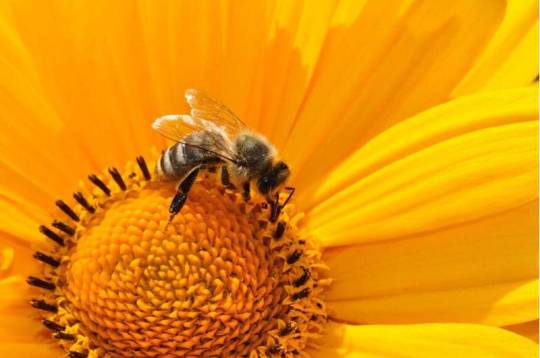
“[Researchers] developed a digital comb—a thin circuit board equipped with various sensors around which bees build their combs. Several of these in each hive can then transmit data to researchers, providing real-time monitoring. [… Digital comb] can [also] be activated to heat up certain parts of a beehive […] to keep the bees warm during the winter[…. N]ot only have [honeybee] colonies reacted positively, but swarm intelligence responds to the temperature changes by reducing the bees' own heat production, helping them save energy.”
2. Babirusa pigs born at London Zoo for first time

“Thanks to their gnarly tusks […] and hairless bodies, the pigs are often called "rat pigs" or "demon pigs” in their native Indonesia[….] “[The piglets] are already looking really strong and have so much energy - scampering around their home and chasing each other - it’s a joy to watch. They’re quite easy to tell apart thanks to their individual hair styles - one has a head of fuzzy red hair, while its sibling has a tuft of dark brown hair.””
3. 6,000 sheep will soon be grazing on 10,000 acres of Texas solar fields

“The animals are more efficient than lawn mowers, since they can get into the nooks and crannies under panel arrays[….] Mowing is also more likely to kick up rocks or other debris, damaging panels that then must be repaired, adding to costs. Agrivoltaics projects involving sheep have been shown to improve the quality of the soil, since their manure is a natural fertilizer. […] Using sheep instead of mowers also cuts down on fossil fuel use, while allowing native plants to mature and bloom.”
4. Florida is building the world's largest environmental restoration project

“Florida is embarking on an ambitious ecological restoration project in the Everglades: building a reservoir large enough to secure the state's water supply. […] As well as protecting the drinking water of South Floridians, the reservoir is also intended to dramatically reduce the algae-causing discharges that have previously shut down beaches and caused mass fish die-offs.”
5. The Right to Repair Movement Continues to Accelerate

“Consumers can now demand that manufacturers repair products [including mobile phones….] The liability period for product defects is extended by 12 months after repair, incentivising repairs over replacements. [… M]anufacturers may need to redesign products for easier disassembly, repair, and durability. This could include adopting modular designs, standardizing parts, and developing diagnostic tools for assessing the health of a particular product. In the long run, this could ultimately bring down both manufacturing and repair costs.”
6. Federal Judge Rules Trans Teen Can Play Soccer Just In Time For Her To Attend First Practice

“Today, standing in front of a courtroom, attorneys for Parker Tirrell and Iris Turmelle, two transgender girls, won an emergency temporary restraining order allowing Tirrell to continue playing soccer with her friends. […] Tirrell joined her soccer team last year and received full support from her teammates, who, according to the filing, are her biggest source of emotional support and acceptance.”
7. Pilot study uses recycled glass to grow plants for salsa ingredients

“"We're trying to reduce landfill waste at the same time as growing edible vegetables," says Andrea Quezada, a chemistry graduate student[….] Early results suggest that the plants grown in recyclable glass have faster growth rates and retain more water compared to those grown in 100% traditional soil. [… T]he pots that included any amount of recyclable glass [also] didn't have any fungal growth.”
8. Feds announce funding push for ropeless fishing gear that spares rare whales

“Federal fishing managers are promoting the use of ropeless gear in the lobster and crab fishing industries because of the plight of North Atlantic right whales. […] Lobster fishing is typically performed with traps on the ocean bottom that are connected to the surface via a vertical line. In ropeless fishing methods, fishermen use systems such an inflatable lift bag that brings the trap to the surface.”
9. Solar farms can benefit nature and boost biodiversity. Here’s how

“[… M]anaging solar farms as wildflower meadows can benefit bumblebee foraging and nesting, while larger solar farms can increase pollinator densities in surrounding landscapes[….] Solar farms have been found to boost the diversity and abundance of certain plants, invertebrates and birds, compared to that on farmland, if solar panels are integrated with vegetation, even in urban areas.”
10. National Wildlife Federation Forms Tribal Advisory Council to Guide Conservation Initiatives, Partnerships

“The council will provide expertise and consultation related to respecting Indigenous Knowledges; wildlife and natural resources; Indian law and policy; Free, Prior and Informed Consent[… as well as] help ensure the Federation’s actions honor and respect the experiences and sovereignty of Indigenous partners.”
August 8-14 news here | (all credit for images and written material can be found at the source linked; I don’t claim credit for anything but curating.)
#hopepunk#good news#honeybee#bees#technology#beekeeping#piglet#london#zoo#sheep#solar panels#solar energy#solar power#solar#florida#everglades#water#right to repair#planned obsolescence#trans rights#trans#soccer#football#recycling#plants#gardening#fishing#whales#indigenous#wildlife
137 notes
·
View notes
Note
hi chicken! sorry if this is a loaded question but how do you invite spirits in to your space?
i have been doing it by “creating” a visualized door and saying that the door can only be seen and stepped through by (wanted spirit) and that seems to be working but i just wanted to see if there’s maybe a better way to do it?
thank you if you do respond and thank you for being so openly helpful :)
That's a perfectly cromulent method. Not necessarily better methods, but different tech, if you're interested.
To call through spirits I think a person should be concerned with the doorway (as you have done) and also the road.
The doorway and road may both be designed to aide in the travel of a certain spirit. This may be in general (a lunar sort of door for general spirit-calling, or a saturnine door for all ancestors and the dead, and so on).
However the doorway and road may also be very specific, until they are so specific that they'll only work for that one spirit. This is the kind of thing you may work up for a familiar or a spirit you work with very closely.
In my book this all comes down to the nature of the spirit. Where do they live? What realm do they exist within? Can you draw a map that leads there? Perhaps the map must be mythical - containing the World Tree, and so on - but do you know where they're coming from?
To work with doorways, you can visualize them as being specific to the nature of the spirit. Perhaps a cloud dragon is called by visualizing a doorway of fluffy clouds; a solar spirit is called through a blindingly bright doorway with six rays emanating from it, and so forth.
Talismans can be made that support the creation of your visualized doorways. A drawn door, perhaps also with runes, sigils, etc., added to it to aide with travel, can be very helpful. Visualize your door within that drawn door and see if it makes a difference.
But a doorway talisman can also be abstract; you could form one with a container spell, again projecting your visualized door into it.
Such talismans can be consecrated by their own right to appropriate gatekeepers who rule over passages between the worlds. Perhaps Gemma Gary's great gray toad of the west might rule over someone's watery doorway talisman to talk to water spirits, and so forth.
These talismans (or pure visualization itself) can be combined with working with roads.
Just as a spirit passes through a gateway, it also must travel down a road to get here (and then back up the road again when it leaves). These roads can appear cyclically, such as those created by the movement of planets (including the daily rotation of Earth). They can be found naturally, but they can also be made.
Laying the compass is the classical way of opening roads in Traditional Witchcraft. This is done to open the roads in four directions corresponding with elements. But you can perform a similar technique to only open one specific road in any direction, connected with any world.
When working with roads consider that there may be a literal gatekeeper of the road; a guardian who dictates what may or may not pass. These gatekeepers are best petitioned when a road within their domain is opened.
Just as doorways can be fashioned into physical talismans, so can roads. Roads can be represented by placing an object in that direction (as it's classically done when laying a compass or calling quarters), but you can also make paper talismans, such as sigils or drawings, to represent the road you're trying to open.
It's all symbolic, right. These roads and doorways are nonphysical and so all physical representations are nothing but approximations. So you just make it as near to the real thing as you can get, whatever that means to you. A helpful spirit may show you how to build these tools.
So the idea is that instead of just having a doorway, you also have a road. By linking them together and crafting them so they align as much as possible with spiritual roads, you may find that calling spirits through becomes more impactful.
The primary difference for me is that the door is what is stepped through into my space; the road is elsewhere and may require work before it's traversable. So this may involve clearing the way, working with gatekeepers, and so forth.
51 notes
·
View notes
Text
a theme in art that fascinates me is imagining the ultra-long-duration future of humanity, in which our forms become increasingly abstracted and strange to us.
i encountered pop-rock duo Zager and Evans' song In the Year 2525 from, naturally, a Fallout: New Vegas music mod. idk if this embed will work for you or if it gets copyright-slapped, you might have to click...
youtube
...but anyway, it follows an imagined 10,000 year future of humanity in ~1010 year increments, projecting various things that might occur. its concerns are, naturally, terribly 1969: babies selected from the bottom of a 'long glass tube', behaviour-controlling pills, bodies atrophying because everything done by machines, at some point God shows up - not a mention of computers, they weren't even on the horizon. the song has spawned numerous parodies and variants, from a Jewish version to the theme song of 90s American action show Cleopatra 2525.
I feel like what makes it work is the tone: the rising and falling minor arcs, the sense of resignation in the lyrics. far more than the specific scenarios imagined, which are a bit corny, there is that glimpse of the disorienting feeling that the forms we inhabit now are just an emphemeral passing phase, and how vast the possibility space of life could be.
Man After Man (1990) by Dougal Dixon takes another approach: using the tools of speculative biology, Dixon tries to imagine all sorts of strange hominids that could emerge out of us. you most likely know it from the Seasons Greasons meme, in which we become a screaming furry ape biting a larger, fluffier screaming ape. but Dixon has many weirder ideas. CM Kosemen went for a similar project in 2006 titled All Tomorrows. I regret to say I have read neither of those books, so I'll have to leave it at that.
of course, the GOAT on this subject is Don Hertzfeldt (who we visited way back on AN89). starting with his film The Meaning of Life, which I recently watched at the GSFF, the long-term weird future of humanity became a recurring central theme in Hertzfeldt's work.
youtube
Hertzfeldt's film is almost entirely without dialogue. a huge variety of human characters walk across the screen to and fro; then the timeline accelerates and increasingly weird designs appear, interspersed with representation of timing of the solar system. at the end, two characters have a discussion in a nonsense language where only words that vaguely resemble 'meaning of life' can be discerned. the larger character seems to scoff at the smaller one's question, leaving the smaller staring out at the universe.
of course, the best-known version is probably that time he did an intro for the Simpsons, which speedruns a similar idea in about a minute and a half.
youtube
like with the eponymous phrase in The Meaning of Life, the film depicts some kind of heavily decayed signal being preserved even as everything else changes around it. it throws in a lot of Rejected-style surrealism for humour, but there's still a core affirmation: 'still love you homar', text reading 'I will never forget you' - a willful absurdity in the face of everything else arounding it underlining that entropy will win and everything must become unrecognisable.
the substance of the theme becomes more concrete in Hertzfeldt's three-part film It's Such A Beautiful Day, which tells the slow, relentless story of a character losing his memories, identity and cognitive abilities to dementia. to spoil the final moment of the film, which you should really watch... at the last minute, as it seems certain the character will finally die, the film - which has been entirely grounded so far - swerves into narrating the character's immortality, outliving humanity and watching until the heat death of the universe. it is performed as a desperate and tragic choice by the narrator to switch into a different story, but it also serves to underline by its absurdity how all of our defining information will decohere and our fate is the same as Bob's.
(I won't go into World of Tomorrow for now, though it is probably Hertzfeldt's best work, because I really need to rewatch it - I don't feel confident summarising it and its relevance to the theme right now lol)
I have a strange desire to see what happens next for humanity. 'I' get to bear witness to this brief... maybe 70, 80 years if average life expectancy stays where it is. I can absorb as much information as I can into the whorls of my brain's neural network, encode it in various communicable forms so that what I have learned and what I value can outlive me. but once I'm gone, only memories of me and artefacts I have left behind can continue to affect the world. I might still have a distinguishable causal effect on the world in decades, perhaps hundreds of years after I'm gone. after that my existence is indistinguishable from noise. and subjective-experience wise, I don't get to see it anyway!
but what if I didn't go? what if we got to live forever?
when I imagine getting to see the far future, I imagine the current me getting to see it, as if I got to step in a time machine. but the creature I become will be native to that time period.
let us imagine the set of states available to a brain. we can provisionally think of it comprising a dynamics model and stores of information such as memories, but that might prove insufficient. regardless: these things in combination learn to build an approximate model of the outside world and my place in it. they evolve with time. storing new memories causes older ones to decay gradually. the dynamics model is reinforced by the habits of thinking it performs.
it is a theorem that a one-dimensional system undergoing a random walk will eventually visit every possible state available to it an infinite number of times. but a 3D system is only 34% likely to return to its starting point, and an N-dimensional system becomes increasingly unlikely to ever return there as the dimensions increase. moreover, any two points undergoing a random walk in a high-dimensional space will grow infinitely far apart in the same way.
if we imagine the evolution of the brain as being like a random walk (perhaps through some lower-dimensional latent space rather than the space of all possible neuron firings, except the latent space and architecture may well change as the brain learns new environments and the possibility to self-modify comes into existence)... I guess that means that in the long durée, 'I' will become increasingly alien to the current me, and also everyone I know presently. what difference does it make that one person in a hundred thousand years has a special causal chain leading back to the 'me' that exists now, and another doesn't?
you could say there is some anchor or attractor in the space, some persistent life goal or set of values or 'inner law', which you would orbit even as the world transforms drastically around you. we try to stay consistent with ourselves, after all. but my experience is: dubious. I have changed a lot in some ways, less so in others; themes from when I was a lot younger seem to recur unexpectedly. I can read a story I wrote a decade ago and still recognise the voice of it. but it feels like it is a set of different timescales of change rather than anything being fundamentally immutable.
replication, attractor states, the nebulous goal-seeking structures that are being called 'diverse intelligence': these things can keep a pattern around. but only so long.
in one timeline, I die at a distinct point: all the processes shut down more or less at once, the organising principle decoheres, and the assembly of matter ceases to be an organism as it was just a moment earlier. in another timeline, 'I' disappear gradually as memories are overwritten and by brain learns to act differently; there is no definite point where I definitively cease to be the same person.
(some human relationships end abruptly, such as in a big fight, or a death. others end through a gradual divergence. I have experienced this many times in even the short period I've been alive. sometimes though, a stable feedback loop keeps the two people close over a very long period, even as they change. these feel special, they accumulate far more memories, they are more painful if they break. two or more humans might live happily together for 70 years, easily enough. but could a relationship last indefinitely? over billions of years?)
so what sort of mind could take it all in? comprehend all the different eras and forms?
I think about associative memory. to crudely oversimplify, we consolidate and store short-term memories accumulated through a day during sleep into a long-term form. kirsanov says they go into the neocortex but I am not sure this is as settled as I thought; it doesn't really matter. when awake, we retrieve memories associatively: something will 'remind you of' something else that might be relevant. however, it would follow that only so much information can be retrieved for processing at once.
to make the inevitable analogy to artificial neural networks and computers, we don't have anything so simple or precise as a 'context window', but at any given time I feel like there must be only so much 'bandwidth' to pull in additional memories into the working memory 'cache'. imagine if you could have a vast 'library' of semantic and episodic memories, and look up something relevant very quickly, but you can only 'read one book' (or a few books) at a time. and the way you think and behave depends significantly on the books you pull out.
at that point you have to be a creature who can perform many different 'characters'. you might have memories of both, but your 25th-century-sona might be very different from your 41st-century-sona. you are sort of inescapably plural. shoggoth wearing a mask, etc. etc., you know where I'm going with this.
is this necessary? would it be possible to have a 'brain' that can consider vastly more information at once in parallel, like the planet-running Minds in Iain M Banks? or is there some kind of linear bottleneck, the putative 'main thread' which may or may not be identifiable with 'consciousness'? even without a bottleneck, it takes time for information to propagate. you could pile neurons onto a brain, letting its broad plasticity adapt them to whatever function it might need, but at some point it's more like a vast space where multiple 'wavelets' of collective thought-excitation are moving around and interacting with each other than a unified thing.
but perhaps that is no obstacle: perhaps a process in there could just duplicate instances of itself and have some mechanism to reconcile them periodically and pass information between these units, and the whole thing can be a nice little universe-contemplating superorganism. until some nodes start to defect. but oh dangit, we just invented multicellularity again. and GPUs. and... human society?
so perhaps that's the resolution to my little wish: this little 'node' right here may only be able to consider the parts of history that it's exposed to, but it's a component in a larger system. it can receive compressed representations of thoughts from other nodes, and send them in turn. we call that 'language'. that's what you're reading right now, hi!
well, that's nice and pretty and all, but it still leaves us with entropy and the arrow of time. maybe the superorganism will eventually see the whole future, but its older memories still decay, and I am not the superorganism.
in the absence of a total perspective vortex, then... without the means to know 'halloween'...
well, that leaves constructing fantasies of it, as an artistic gesture, a game to play in the present. it will absolutely certainly get everything wrong and one day feel as dated as Zager and Evans. it still calls to me, though - to fully dissolve what is familiar, and take no arbitrary assumption. who can say why.
#introspective nightposting#science fiction#Youtube#i guess this is another specimen of lisdexamfetamineposting
27 notes
·
View notes